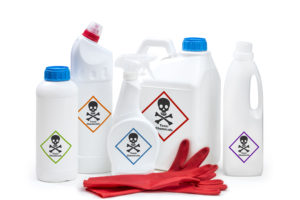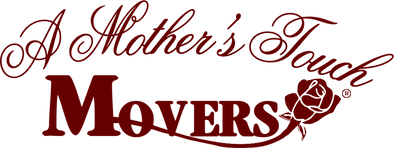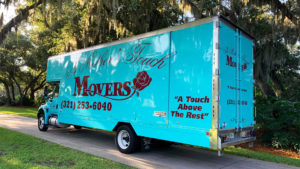If you have begun the process of packing up your home, you’ve probably reached the same conclusion as most of us who have been in the same situation: You’ve got a ton of stuff. From toys and worn out linens to chipped plates and electronics with missing pieces, the things you need to get rid of could fill an entire room, right?! Well, we often speak of how to dispose of your unused/unwanted items before you pack up and head out. Ridding yourself of belongings you do not want or need is a great way to start fresh. You can create specific piles as you declutter each room. A pile to give away, a pile to trash, a pile to sell (if you are so inclined), etc. This is a great idea for most things. But what about hazardous waste? How do you even know what qualifies as such, and once you know, what do you do with it?
A Mother’s Touch Movers, Melbourne, FL’s premier professional moving company, has your safety at the top of our moving list. If you’re in Merritt Island, Palm Bay, Viera or anywhere in Brevard County, we’re the go-to residential and commercial moving company. Keep in mind that hazardous materials cannot be transported by us and should not be by you either. Here’s how to identify hazardous waste and what to do with it.
The first step is to recognize what items in your home are considered hazardous waste. According to the Environmental Protection Agency, materials are considered hazardous if they meet certain criteria. In essence, products which contain certain properties that make them harmful to health, humans, or the environment make the cut. It can be overwhelming to determine what makes the list so here is a basic breakdown of what you need to know:
Ignitability
Materials which easily catch fire fit this list. Think of things like gasoline and propane here. Liquids with a flash point less than 140 degrees Fahrenheit apply to this category as well.

Toxicity
Any material that contains properties that are considered toxic fit the bill here. Substances that give off fumes such as paint, common garden chemicals, and even anti-freeze are a few examples.
Corrosive Items
Corrosive substances are typically liquids that have the ability to corrode metal. A quick chemistry lesson is in order here. Corrosive materials have a pH level of 2 or below OR 12.5 or more. PH refers to the acidity or alkalinity of a substance. Common household cleaners can fit into this category so pay attention to the cleaners you have stashed under the sink or in the garage.
Reactive Substances
Materials which fall into this category are considered unstable and likely to explode when exposed to excessive heat or other chemicals. Naturally, this category is hard to define as it is virtually impossible to list all of the situations that can lead to a reaction. However, the EPA has given guidelines to help determine what materials are considered reactive:
- Instability and prone to excessive change without detonation
- The possibility of explosivity when mixed with water
- The release of toxic gas/fumes when added to water
We know this is a lot to take in, so we will conclude this post here. Next week, let’s take a look at how to get rid of these substances in a safe manner.



